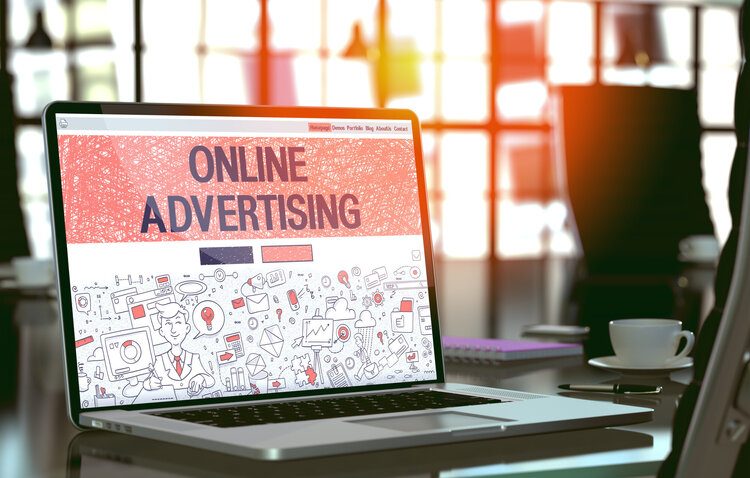Digital Advertising Checklist
- 1 Complete Digital Advertising Checklist
- 1.1 Set Your Goals
- 1.2 Understand Your Audience
- 1.3 Evaluate the Competition
- 1.4 Ace Your Branding
- 1.5 Maximize Your Platforms
- 1.5.1 SEO
- 1.5.2 Social Media Marketing
- 1.5.3 Content Marketing
- 1.5.4 Email Marketing
- 1.5.5 Paid Advertising
- 1.6 Mobile Optimization
- 1.7 Your Complete 2021 Digital Advertising Checklist
Did you know that by the end of this year, experts predict offline revenue will be down by as much as 20%? This statistic alone sheds light on the importance of not only being online but being an undeniable force with your digital marketing approach.
Of course, marketing online isn’t as simple as creating a few profiles and sending some emails. Your digital advertising will take a lot of time and effort to develop, practice, and master. Fortunately, we’re here to help you manage your marketing with ease with this digital advertising checklist.
Follow along to discover everything you need to know to build a following online in the year ahead and maximize your digital marketing approach.
Complete Digital Advertising Checklist
Set Your Goals
First things first, before you launch any digital marketing strategies, you’ll need to have a clear understanding of what and why you are marketing online.
Your goals may be different from platform to platform, but having an overall understanding and motivation behind your efforts will help drive results in the right direction.
You may be getting active online simply to boost brand awareness and increase your reach. Or perhaps you plan on using digital marketing platforms to scale your revenue and drive sales.
In reality, you’ll likely have more than one goal with your approach – and that’s fantastic! Be sure to write down your goals and keep them close by, as they can and will determine your next steps as we venture down the digital marketing checklist.
Understand Your Audience
Next up, you’ll need to get real familiar with your target audience. You should not only know where they are located and about what age bracket they fall into, but also details about their personal life that may influence their buying decisions.
The best way to truly understand your audience is to create a customer persona. This persona is your absolute ideal customer. You’ll give them a name, demographic, location, and even tap into their family life, daily schedule, and how they spend their free time.
The more information you know about your audience, the better you can relate and market to them. With an intimate understanding, your relationships will be much more beneficial for sales, loyalty, and accurate reach.
This target audience information will then help you determine what platforms to focus your efforts on, when to reach out, and even how to speak to your customers via content.
Evaluate the Competition
The final step before launching your strategy is to have a look at what your closest competitors are up to.
Notice what they are doing well, what they are lacking in, and what you can learn from their efforts. Instead of starting from ground zero, you can use what your competitors have already discovered to guide your keyword research, shape your content marketing strategy, and ‘borrow’ their target audience.
Of course, you don’t want to copy what they are doing word for word. Especially if they aren’t having the greatest success online. Be sure to put your own branding and creativity into your work and use their work as a measurement to stand out above the masses.
Ace Your Branding
Finally, it’s time to put your research to the test. Once you know what you’re doing and who you’re talking to, your first step is to develop a clear and concise brand online.
This will include elements like your logo, color selection, and web design. The platforms you choose to utilize will also play a large role in your branding and voice – especially when it comes to social media marketing.
By establishing your brand early, you’ll be able to create a consistent experience across all of your mediums for your customers. This not only includes how your brand looks, but how to interact and attend to customers’ needs, messages, and interest in your products/services.
Maximize Your Platforms
As you can imagine, your online approach will be broken down into many different platforms and techniques. As you develop your online presence, here is your checklist of platforms to consider for business growth.
SEO
SEO, or search engine optimization, is the process of making your website more appealing to Google and other search engine algorithms.
To do this, you’ll need to make adjustments to your website in alignment with what the algorithm believes makes the ‘best site’. Fortunately, all of the preferences of the algorithm contribute to a better user experience too!
Your SEO approach will include things like:
- URL structure
- Title tags
- Meta descriptions
- Keywords
- Internal and external linking
- Content quality
- Site speed and performance
Since your website is the heartbeat of your digital marketing approach, it’s incredibly important to prioritize your SEO. Beyond this, SEO is like free advertising for your brand. The higher your rank, the more organic traffic you’ll attract!
Social Media Marketing
Your presence on social media will play a large role in how customers trust and interact with your brand.
Platforms like Instagram and Facebook are where your audience turn when they are looking to learn more about who you are as a brand and validate that you are in fact ‘real’. This means you’ll need to be active, engaging, and true-to-brand with every single social interaction.
From utilizing stories and responding to comments and messages to posting a thank you Instagram post as you build a following, the way you act on these platforms can make or break your online presence.
Fortunately, by leveraging what you know about your audience, you can select 2 or 3 social platforms to focus your efforts and reach the right audience. From here, you can drive this audience to your website, help boost your SEO, and leverage feedback to guide your digital advertising.
Content Marketing
Your content marketing could be as simple as weekly blogs, or as complex as video marketing. Whatever content you choose to leverage for your online approach, the key is to remain consistent and data-driven.
Use your keyword research and social media feedback to guide your content strategy. This will help you determine what your viewers want to see and how to best deliver the information.
The main types of content audiences love to see include:
- Blogs
- eBooks
- Podcasts
- Newsletters
- Video
- Infographics
Email Marketing
Email marketing is perhaps the most direct and beneficial marketing platform available to brands.
By collecting email addresses from interested customers, you’ll ensure you have a direct line of contact to lead them through your sales funnel, retarget, and encourage loyalty. What’s more, this list is yours to leverage and can’t be shut down as your social media account could.
To get the most out of your email marketing, you’ll want to ensure your headlines are catchy and personal and your content adds value to your customers. This isn’t the place to brag about your brand or talk about yourself. Your emails should offer benefits and bonuses to customers that are nearly impossible to refuse.
Paid Advertising
Paid advertising includes the ads you place on social media, search engines, and any other digital platform.
These ads can be tailored to your audience by the use of keywords and special targetting. Fortunately, you’ll know exactly who to target based on your detailed customer persona from earlier!
Paid ads are fantastic for reaching a more specific audience and driving sales – especially when you’re still in the process of building your following and shaping your SEO.
Mobile Optimization
We already know how popular mobile devices have gotten, and their usage is not expected to decline anytime soon.
With this in mind, it’s incredibly important that your brand is just as accessible on a mobile device as it is on a desktop. Your website, content, and advertising should all be optimized for these little screens to get the most out of your digital approach.
You may even consider taking your email list mobile by adding SMS messages to your outreach efforts.
Referral or Influencer Marketing
Customers take referrals seriously these days. In fact, a referral from an influencer is equivalent to a recommendation from a close friend or family member in today’s world.
This is why strategies like influencer marketing and referral programs have become so popular. The benefits are mutual for both your brand and the recommending account and can contribute to incredible low-risk growth.
If you decide this platform is right for you, invest some time and energy into investigating influencers or developing your referral program. You’ll want to be sure to work with people who are genuinely passionate about your products and services. This includes having similar morals and values to that of your brand.
Track and Analyze
Last but certainly not least, you’ll need to track and analyze your results across all digital marketing platforms. The information you gain from these analytics will tell you what you are doing right, where customers are falling off the bus, and how you can improve your approach to boost sales and build relationships.
Each platform will have key insights to watch, so be sure to leverage this information on every platform and campaign wherever possible.
Your Complete 2021 Digital Advertising Checklist
There you have it! Your complete digital advertising checklist for business growth in 2021. From setting your goals to data-driven adjustments, we’re confident you’ll see impressive results with this step-by-step plan.
Want more tips and tricks for digital advertising in 2021? Check out our other articles to discover everything you need to know about marketing your brand for success.

















